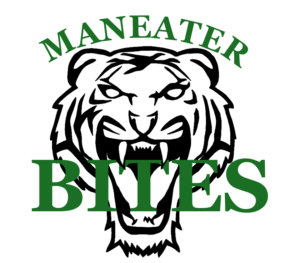March 12, 2014
Professional basketball is the ultimate showcase of the black body.
Unlike in hockey, there are actual black players. Unlike in baseball, black kids actually still want to play the sport. Unlike in football, black bodies and faces aren’t covered by protective gear and headwear.
When it comes to professional basketball, and the NBA specifically, there is no one specific archetype black players fit into.
Former NBA player Grant Hill [has been called an “Uncle Tom”](http://thequad.blogs.nytimes.com/2011/03/16/grant-hills-response-to-jalen-rose/?_php=true&_type=blogs&_r=0) in the past because he attended Duke and came from a two-parent, middle-class household.
Eleven-time All-Star Allen Iverson was known as the scrappiest and thuggish basketball player to ever set foot on an NBA court. Iverson accepted his 2001 MVP award in a headband, platinum chain and his large collection of tattoos.
LeBron James, the once hated and now almost universally adored star of the Miami Heat, is marketed as a family man in his plethora of Samsung phone commercials. Six years ago, James appeared on the cover of Vogue magazine. As [USA Today noted at the time](http://usatoday30.usatoday.com/life/people/2008-03-24-vogue-controversy_N.htm), “James strikes what some see as a gorilla-like pose, baring his teeth, with one hand dribbling a ball and the other around (Gisele) Bundchen’s tiny waist.” The top superstar of professional basketball was made out to look like an ape.
Although Hill, Iverson and James are three completely different types of basketball players — and three different types of black men — what they share is the effect that race has on black players in professional basketball.
Minnesota state representative Pat Garofalo tweeted on Sunday night: “Let’s be honest, 70 percent of teams in NBA could fold tomorrow + nobody would notice a difference w/ possible exception of increase in streetcrime.”
Garofalo insinuated that if a league that is more than 75 percent black were to lose nearly three-fourths of its teams, those black players would go on to become professional criminals. Apparently black NBA players moonlight as basketball stars to support their lifestyle of crime.
The Minnesota lawmaker issued an apology Monday morning, denying that he is a racist and apologizing to those “who are unfairly categorized by my comments.”
No harm, no foul. Pun intended.
But racist comments like Garofalo’s [aren’t anything but the norm](http://www.themaneater.com/stories/2014/1/22/seahawks-sherman-and-stereotypes/) when it comes to black athletes in professional sports.
David J. Leonard, an associate professor in the department of critical culture, gender and race atudies at Washington State University, wrote a research article in 2006 titled, “[The Real Color of Money: Controlling Black Bodies in the NBA](http://jss.sagepub.com/content/30/2/158.short).” In his article, Leonard argued that “Today’s NBA and its surrounding media discourse often construct an authentic Blackness (through youth) as menacing and threatening, as a pollutant that requires surveillance and control.”
The “controlling” of black bodies, according to Leonard, led to the NBA’s age restriction limit in 2006 and the policing of player clothing and hip hop culture in the league. No player will ever be able to wear a headband and platinum chain while accepting an MVP award ever again.
The problem with this policing of black bodies is that it echoes white supremacy ideology. For the sake of this column, white supremacy and white supremacists are two completely different things.
“White supremacists” are people who believe the white race is better than all other races and should have autonomous control. “White supremacy” is an “institutionally perpetuated system of exploitation and oppression of … peoples of color by white peoples … for the purpose of maintaining and defending a system of wealth, power and privilege,” [according to School of the Americas Watch](http://soaw.org/index.php?option=com_content&view=article&id=482).
The NBA is perfectly OK with black bodies populating its league, as long as those black bodies behave in a manner that appeases white owners and a white commissioner. The minute those black bodies act up, as Ron Artest did during the “Malice at the Palace,” then the policing of those bodies increases.
This was seen in the NFL this past season. The N-word was thrown around a few times, and all of a sudden, the NFL is [considering penalizing players for saying the word](http://www.themaneater.com/stories/2014/2/27/n-word-not-worst-thing-about-america/). The NFL is 66 percent black.
So while professional and collegiate (see: Green-Beckham, Dorial) athletic organizations have no problems with showcasing the black body, these institutions have a major problem with policing the athletes they employ.
Leonard concluded that, “Black bodies will continue to be called into the NBA in the name of global capitalism just as those same bodies will be subjected to the rules and logic that emanate from white supremacy.”
Eight years later, this is no further from the truth.


Comments
The Maneater has the right to remove comments that do not comply with policies surrounding hate speech.